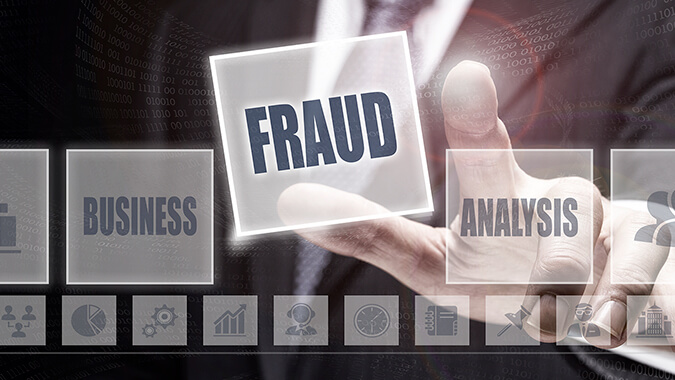
Lost Profits Versus Diminution of Value: An Overview
- Published
- Feb 2, 2022
- Share
In civil cases involving allegations of a business tort – such as contract disputes or other matters in which a party claims that the actions of another have harmed his or her business – the plaintiff (or claimant if the matter is being resolved through alternative dispute resolution, or ADR) must first demonstrate the liability of the defendant (or respondent in alternative dispute resolution, or “ADR”) and, if successful, set forth a reasonable and defensible damages assertion. Questions of liability focus on the veracity of the plaintiff’s allegation and, if a wrong did occur, the extent to which the defendant is responsible. Damages, on the other hand, are typically monies that the liable defendant are to pay to the plaintiff as compensation for the wrongful act. In practice, the trier-of-fact (judge, jury, or arbitrator) often considers liability and damages questions concurrently, but they may also be bifurcated into two separate phases of the trial or hearing.
Not surprisingly, adverse parties in such matters can be assured of having different positions regarding reasonable damages calculations – even assuming that liability is demonstrated to the trier-of-fact. Although there may exist certain legal and contractual provisions that are designed to dissuade parties from certain activities (e.g., the concept of “treble damages” in some antitrust cases or “disgorgement of ill-gotten gains” in intellectual property infringement cases), the basic objective of damages is to restore the aggrieved party to a position similar to that which it would have achieved through normal business operations had the wrongful act central to the dispute never taken place.
But what does “similar position” mean? Generally, there are two different approaches to considering this question: Lost profits, and diminution of value. Under either theory, the adverse parties and the courts often rely on the expertise of a financial expert witness to perform and testify to independent, creditable calculations in a manner that is generally accepted through precedent and, in many instances, compliant with rules salient to the jurisdiction, forum, and/or contractual language.
Under a lost profits approach, the expert witness – often a CPA, CFA Charterholder, or economist – employs applicable methodologies and defensible assumptions to calculate and opine about an amount that he or she believes -- based on her or his education, training, and experience – is the most likely profits that were lost by the complaining party as a result of the other’s actions (or failure to act, as obligated). This typically involves (i) determining the entity’s actual profits during the period of or following the alleged act; (ii) estimating the most likely profits that would have been enjoyed absent the alleged act (the “but for” profits); and (iii) subtracting the computed actual profits from the approximate “but for” profits. While actual profits are typically straightforward, as they are based on historical accounting records (assuming their reliability), calculation of the other piece of the equation – the “but for” profits – requires a bit more professional expertise. The expert must consider not only the entity’s historical growth, but multiple other factors relevant to the period for which “but for” profits are being calculated, including the business’s mitigating actions, life-cycle stage, industry and macroeconomic conditions, entrance of new competitors, seasonality, supply chain issues, availability of capital, and many other factors.
Using a diminution of value approach, the expert witness – who may hold one of the above credentials or a valuation-specific accreditation – uses one or more of three widely-accepted methodologies – the income, asset, or market approaches – to arrive at an opinion of the difference between the alleged-injured enterprise’s actual value and a hypothetical value that would exist had the act never occurred (the “but for” value). Using the asset approach, the expert determines the entity’s fair market value, net of liabilities, as the entity was as of a particular date – proximate to the actual date of calculation – and as it would have been, in his or her opinion, absent the issue at controversy in the matter. Under the income approach, both actual and “but for” value are based on any one of several methods, all of which seek to establish a valuation that is based upon estimates of the business’s future yield from operations, expressed via, for example, discounted cash flows or market capitalization. Diminution of value under the income market approach uses available public-company data that is comparable to the damaged entity both as it is and as it would have been, in the expert’s opinion, had the tort never occurred. All three approaches – asset, income, and market – must be considered, and it is within the expert’s professional discretion to determine which – one, both, or all three – will influence her or his final damages opinion (and, if more than one, at what relevant weights).
The expert must be able to compellingly support whether the lost income or diminution of value approach is appropriate to a particular case. Generally speaking, lost profits are more appropriate for matters of temporary interruption or impediment to profits, while diminution of value addresses permanent impairment to or termination of the business. Many experts, however, choose to furnish opinions using both approaches – one as the preferred and the second as an alternative for the trier-of-fact’s consideration.
Fundamental to both the lost income and diminution of value approaches are two key concepts: causation and reasonable certainty. While the expert is not testifying as to liability (that is, the defendant’s/respondent’s responsibility or lack thereof), he or she must be able to establish that there is a link between the alleged act and the downturn in profits or business value (that said downturn is caused by, and not incidental to, the alleged act). Further, while absolute precision is not required, the expert must demonstrate to the trier-of-fact that there is a defensible likelihood (i.e., reasonable certainty) regarding the assumptions employed in performing her or his calculation and rendering an expert opinion.
Disputants and their counsel are well-served to consider engaging seasoned damages experts early in the case to allow for relevant data to be fully absorbed and considered and should always seek to work with licensed and credentialled professionals who possess requisite education, training, and experience to be qualified (admitted) as experts by triers-of-fact and whose technical acumen and testimony history indicate that the person will be both credible and convincing.
What's on Your Mind?
Start a conversation with the team
Receive the latest business insights, analysis, and perspectives from EisnerAmper professionals.












